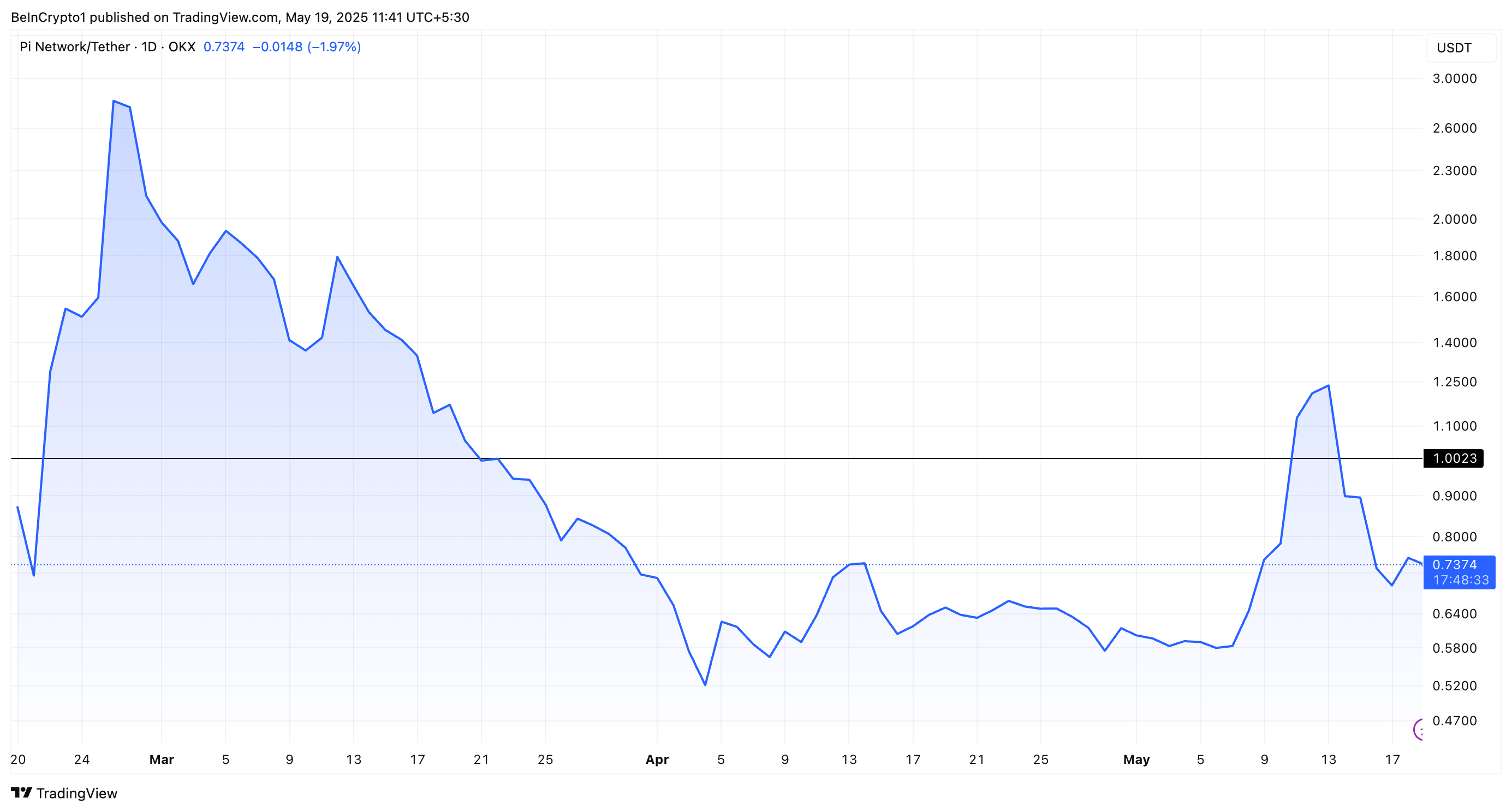Since the Pi Network mainnet launched on February 20, it has made headlines for its ambitious goals. Yet, it has also faced substantial criticism. The underwhelming price performance and lack of DApps, among other issues, have raised questions about Pi Network’s ability to meet the expectations of its reported 60 million users, referred to as Pioneers.
Below are five key areas of underperformance that emerged as focal points for observers in early 2025.
1. Pi Network’s Lack of Binance Listing
Pi Network’s community has been vocal in its push for a listing on major exchanges like Binance. In fact, 86% of participants voted to list Pi Coin (PI) in a February community vote.
Despite this show of support, Binance has not listed PI. On May 15, the exchange posted its logo on X (formerly Twitter) featuring several mathematical symbols, including π. The post sparked speculation among Pioneers, but no official listing announcement followed.
The absence of a listing has led to renewed scrutiny over Pi Network’s credibility. Notably, Binance applies a rigorous evaluation process before listing any asset.
The exchange considers user adoption, business model viability, relevance, tokenomics, technical security, team background, and compliance with regulatory standards. The decision not to list Pi Coin may indicate that the project has yet to meet one or more of these critical benchmarks.
“I now better understand why Pi is not listed on major exchanges such as Binance and Coinbase. It is likely that the Pi Core Team has not been transparent enough about the locking and burning mechanism involving the billions of Pi coins currently owned by the PCT,” Pioneer Dr. Altcoin posted on March 22.
Coinbase, another top exchange, has also refrained from listing Pi. This has further fueled disappointment among Pioneers about the token’s potential for mainstream adoption. Nonetheless, Pi Coin remains available for trading on HTX, Bitget, MEXC, and OKX.
2. Pi Coin Price Fails to Meet Expectations
Pioneers have been actively mining Pi Coin for around six years, anticipating major gains. Yet, its price was a major letdown for many. At launch, Pi Coin was listed on OKX with a floor price of just $2. This was way below its IOU trading value.
The underwhelming debut worsened as PI dipped below the $1 mark shortly after listing. Although the token rebounded to an all-time high of $3 in late February, the rally was short-lived. PI soon resumed its downtrend, falling below $1 again by late March.
Last week, the level was briefly reclaimed as support. Yet once more, PI failed to hold above it. These declines came despite some bullish catalysts.
The launch of the Pi Ventures Fund was followed by a sharp price drop rather than a recovery. Additionally, Pi Network founder Nicolas Kokkalis made a rare public appearance at Consensus 2025 on May 16.
Many hoped it would restore investor confidence. Instead, the token plunged. BeInCrypto data showed that PI dipped 42.6% over the past week. At press time, Pi Coin’s price was $0.7, down 3.1% over the past day.
BeInCrypto reported that allegations of insider selling and concerns about a potential rug pull have further compounded investor worries.
3. Uncertainty Surrounding the Pi Network Ventures Fund
On May 14, the Pi core team introduced Pi Network Ventures. The initiative aims to support startups building on the network.
While the official announcement outlines a funding pool of up to $100 million, Pi Network Foundation retains full discretion over the deployment of these funds.
“The Pi Foundation is not obligated to invest the entire $100 million, based on the quality of applicants and number of startups accepted into the initiative,” the blog read.
The initiative also allows for phased investments over time. Additionally, the Foundation can discontinue funding at any stage. This condition has not been well received by some in the community, who expected more immediate and guaranteed support for ecosystem development.
“The $100M promise investment will discontinue from time to time if they don’t see any investors coming or having no impact at all LOL,” a user wrote.
4. Pi Network’s Missing Decentralized Apps (dApps)
The concerns extend beyond the fund’s stability. Dr. Altcoin alleged that the team is using the fund to build DApps that should have already been completed.
He explained that one of Pi Network’s mainnet launch conditions was deploying 100 live dApps. As of May 2025, this promise remains unfulfilled, with most dApps still missing from the ecosystem.
“After 6 years of waiting, why isnt anyone asking the real question: Where are the 100 Dapps we were promised?” the analyst stated.
The shortfall has left many in the community questioning the network’s readiness and ability to support a functional ecosystem.
5. Pi Network’s Roadmap Issues
Another major concern is the lack of transparency. Pi Network unveiled a three-phase roadmap for its mainnet migration in April 2025, but the absence of specific timelines has frustrated users.
A report from BeInCrypto highlighted the community’s backlash, emphasizing that the roadmap did not include estimated dates or an audit process to address discrepancies in historical mining data. This has further deepened distrust in the project’s leadership.
That’s not all. Other issues, such as delays in KYC and challenges in migrating tokens to the Pi Network mainnet, have also been prevalent.
Thus, Pi Network’s first three months post-launch have been marked by unmet expectations and growing disillusionment among its Pioneers. As the network navigates these setbacks, its ability to deliver on its ambitious vision will be critical to restoring confidence in the months ahead.
The post Top 5 Biggest Setbacks Pi Network Faced After Mainnet Launch appeared first on BeInCrypto.
